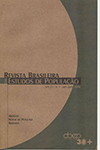Evolution of education in Brazil: an analysis of educational rates between 1970 and 2000 according to highest grade concluded
Keywords:
Education attained, Immigration and education, Aging and educationAbstract
This article discusses the differences in rates of highest grade reached in school in Brazil by persons age 15 years and older between 1970 and 2000, according to age and gender group. For the higher age groups the expansion in formal education seems to have resulted in an increase in the number of persons with at least one grade of elementary education concluded, whereas for the younger brackets, the growth in the proportion of those with at least one year of senior high school [grades 9-11] and higher education concluded was more significant. Analysis by cohort showed a greater increase, during the period, among the younger cohorts and the women, in the proportion of persons in high school, and college or university. The older age brackets in 2000 had little effect on the statistical growth of education in the country, and actually reduced the difference between the rates seen in 1970 and in 2000 for the levels of: no formal education, elementary education, and high school. But for the number of persons in higher education, this factor increased the difference. The distribution by educational level of legal international immigrants, as shown in the censuses of 1991 and 2000, contributes to an increase in the rates of higher levels of education.Downloads
Downloads
Published
How to Cite
Issue
Section
License
Papers published in Rebep are original and protected under the Creative Commons attribution-type license (CC-BY). This license allows you to reuse publications in whole or in part for any purpose, free of charge, even for commercial purposes. Any person or institution can copy, distribute or reuse the content, as long as the author and the original source are properly mentioned.

